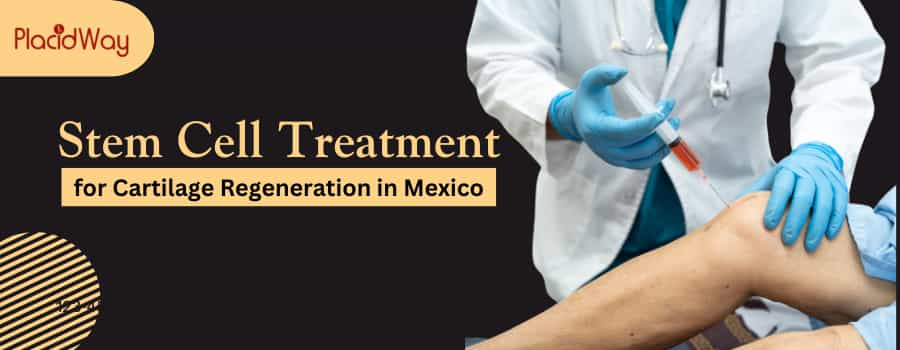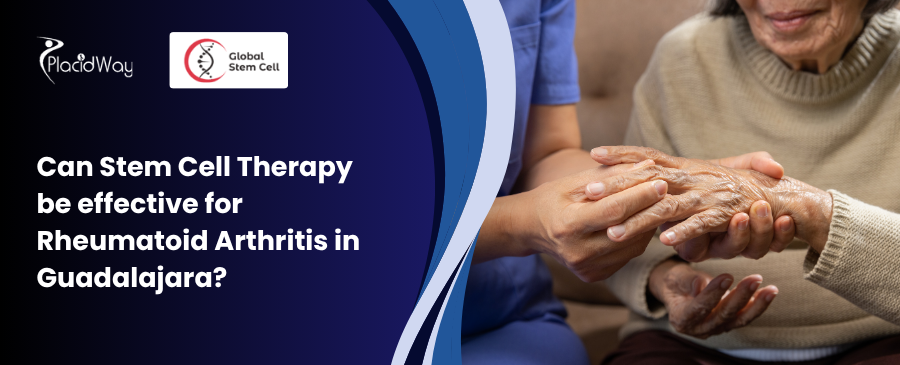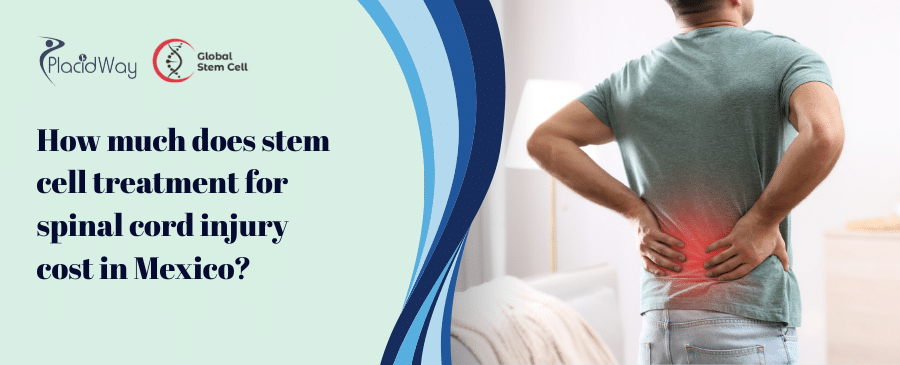Joint cartilage damage can lead to intense pain, reduced mobility, and a lower overall quality of life. This damage can stem from various factors including injuries, aging, or conditions such as osteoarthritis, and typically does not mend on its own. While standard treatments like surgeries or medications may provide some relief, stem cell therapy presents a groundbreaking and potentially more effective alternative for regenerating cartilage. By utilizing the body’s regenerative cells, stem cell therapy fosters tissue healing, repairs damaged cartilage, and decreases inflammation.
Table of Content
Mexico has become a highly sought-after location for those pursuing stem cell treatments, including cartilage regeneration, owing to its reputable medical facilities, skilled practitioners, and significantly lower treatment costs when compared with the U.S. or Canada. In this article, we will cover essential details regarding stem cell treatment for cartilage regeneration in Mexico, the appeal of seeking treatment in Mexico, the advantages and risks involved, costs, and other crucial considerations before opting for this innovative approach.
Key Insights at a Glance
- Stem cell therapy offers a promising, non-invasive alternative for cartilage regeneration.
- Patients are drawn to Mexico for its affordable stem cell treatments and high-quality care.
- Stem cells can be sourced from the patient (autologous) or a donor (allogeneic) like adipose tissue or umbilical cord blood.
- The therapy involves injecting these stem cells into the compromised joint to encourage healing and new cartilage formation.
- Mexico’s advanced clinics, expert medical staff, and comprehensive medical tourism packages make it a prime destination for treatment.
What is Stem Cell Therapy for Cartilage Regeneration?
This therapy consists of injecting stem cells into joints with damaged cartilage—such as the knee, hip, or shoulder—to facilitate healing and regeneration of tissue. The stem cells encourage the development of new cartilage and help to minimize inflammation, potentially postponing or eliminating the need for more invasive interventions like joint replacement surgery.
The stem cells used in these procedures can originate from various sources, including:
Types of Stem Cells for Cartilage Regeneration
- Autologous Stem Cells – Harvested from the patient’s own body, primarily from adipose tissue (fat) or bone marrow, which minimizes rejection risk.
- Allogeneic Stem Cells – Sourced from donors, such as umbilical cord blood or amniotic fluid, these stem cells offer a viable alternative when autologous cells are unavailable, though they carry more regulatory and ethical implications.
- Mesenchymal Stem Cells (MSCs) – Frequently utilized in cartilage regeneration due to their ability to differentiate into cartilage and other connective tissues, obtained from sources like bone marrow, adipose tissue, or umbilical cord blood.
How Does Stem Cell Therapy for Cartilage Regeneration Work?
The procedure begins with the collection of stem cells, either from the patient or an external donor, which are then processed in a lab for injection. Using ultrasound guidance for accuracy, the concentrated stem cells are injected directly into the affected joint. After injection, the stem cells promote cartilage regeneration, alleviate inflammation, and aid in healing, ultimately restoring joint function and reducing pain.
Why Choose Mexico for Stem Cell Treatment?
Mexico has emerged as a prominent hub for medical tourism, especially for stem cell therapies, due to its exceptional healthcare services, cost-effectiveness, and close proximity to the U.S. Here are some compelling reasons to consider Mexico for stem cell therapy aimed at cartilage regeneration:
1. Affordable Treatment Costs
Cost savings are a primary motivator for patients choosing Mexico for these therapies. While stem cell treatment for cartilage regeneration can range from $10,000 to $30,000 in the U.S. or Canada, in Mexico prices are notably lower, typically between $3,000 and $8,000, influenced by the type of stem cell utilized, procedural complexity, and clinic location.
2. Experienced Medical Professionals
Mexico boasts a diverse pool of skilled doctors and specialists with expertise in stem cell therapy for cartilage restoration. Many have received training in the U.S. or Europe and are adept in advanced techniques, dedicated to providing high-quality care and achieving optimal outcomes for their patients.
3. State-of-the-Art Medical Facilities
The clinics and hospitals in Mexico that offer stem cell therapies are equipped with cutting-edge technology and comply with international care standards. Numerous facilities are JCI-accredited, ensuring adherence to strict safety protocols and hygiene practices, providing modern equipment and comfortable environments for international patients.
4. Shorter Waiting Times
Patients in other countries often face lengthy waiting periods for advanced treatments like stem cell therapy. In Mexico, these waiting times are generally reduced, allowing for quicker scheduling of treatments. This aspect is particularly advantageous for those seeking immediate relief from cartilage damage.
5. Comprehensive Medical Tourism Packages
Numerous clinics in Mexico offer all-encompassing medical tourism packages that include the cost of stem cell therapy along with travel, accommodation, and post-treatment care, simplifying the process for patients from abroad.
Did you know?
Mexico ranks among the top destinations for medical tourism, with millions traveling annually for treatments, including stem cell therapy for cartilage regeneration.
Types of Stem Cell Treatment for Cartilage Regeneration in Mexico
In Mexico, a variety of stem cell treatments are available, tailored to the source of the stem cells and the severity of cartilage damage. The most common types are:
1. Bone Marrow-Derived Stem Cells
To obtain these stem cells, doctors extract them from the patient’s bone marrow, typically in the hip region. These cells are processed and injected into the affected joint to encourage cartilage regeneration, making this one of the most frequently used sources for treatment.
2. Adipose-Derived Stem Cells
Fat cells are a rich source of mesenchymal stem cells. These are acquired through a minimally invasive liposuction procedure, after which the stem cells are injected into the damaged joint to stimulate cartilage development.
3. Umbilical Cord Stem Cells
Several clinics provide stem cells straight from umbilical cord blood or amniotic fluid, noted for their regenerative properties and often utilized for patients lacking sufficient harvestable stem cells. These stem cells are typically sourced from healthy donors and present a viable alternative for cartilage regeneration.
What to Expect Before, During, and After the Procedure
Before the Procedure
Prior to the treatment, you will meet with a doctor to evaluate your medical history and confirm if stem cell therapy is appropriate for you. Imaging studies like X-rays or MRIs may be conducted to assess the level of cartilage damage. The physician will thoroughly explain the procedure, and you might need to refrain from specific medications or smoking to enhance healing.
During the Procedure
The stem cell procedure usually lasts between 1 to 2 hours. It begins with the extraction of stem cells from the patient or an external source, followed by laboratory processing to isolate viable cells. Ultimately, the stem cells are injected into the damaged joint with ultrasound guidance, using local anesthesia or sedation for comfort.
After the Procedure
Recovery involves rest and avoiding rigorous activities for several weeks. If adipose-derived cells are used, wearing a compression garment may be required to minimize swelling. Physical therapy could be advised to regain mobility and strengthen the joint. Many patients notice improvements within 3 to 6 months, though full cartilage regeneration may take a year or more.
Did you know?
Recovery from stem cell therapy is generally quicker than traditional surgeries, such as joint replacements. Most patients can resume light activities within weeks, with full recovery potentially taking several months.
Cost of Stem Cell Therapy for Cartilage Regeneration in Mexico
As previously mentioned, one significant advantage of stem cell treatment for cartilage regeneration in Mexico is affordability. Below is a glimpse of the approximate costs for stem cell therapy for cartilage regeneration in Mexico:
| Type of Treatment | Estimated Cost (USD) |
|---|---|
| Bone Marrow-Derived Stem Cells | $3,000 – $6,000 |
| Adipose-Derived Stem Cells | $4,000 – $8,000 |
| Umbilical Cord Stem Cells | $7,000 – $10,000 |
Note: Prices may fluctuate depending on the clinic, type of stem cells used, and complexity of the procedure.
Did you know?
In Mexico, patients can save 50-70% on stem cell therapy compared to similar treatments in the U.S., without sacrificing quality or safety.
Risks and Considerations
Though the general consensus is that stem cell therapy is safe, it important to consider certain risks and factors:
- Infection: There is a minor risk of infection associated with any injection procedure.
- Delayed Results: Stem cell therapy is gradual, so significant results may not manifest for several months.
- Not Suitable for Everyone: Individuals with advanced joint degeneration or severe arthritis may not be candidates for stem cell therapy.
FAQs
1. Is stem cell therapy for cartilage regeneration safe?
Yes, when conducted by qualified, experienced professionals in accredited clinics, stem cell therapy is generally safe, with minimal risk of complications if protocols are correctly followed.
2. How long before I see results from stem cell therapy?
Many patients begin noticing improvements in joint function and pain relief between 3 to 6 months, with complete results potentially taking up to 12 months.
3. Can stem cell therapy completely cure cartilage damage?
While stem cell therapy effectively aids in regenerating cartilage and alleviating symptoms, it is not always a definitive cure. It can significantly delay the need for surgery and enhance joint function.
4. Is insurance likely to cover stem cell therapy?
Many insurance policies consider stem cell therapy experimental, resulting in limited or no coverage. However, the reduced costs in Mexico make it a more accessible option for numerous patients.
5. How much can I save by opting for stem cell therapy in Mexico?
Choosing Mexico for stem cell therapy can lead to savings of 50-70%, with typical costs for cartilage regeneration between $3,000 and $8,000.
Ready to Explore Stem Cell Therapy for Cartilage Regeneration?
If you’re dealing with cartilage damage and seeking an effective, affordable treatment, stem cell therapy in Mexico presents a promising solution. With attractive pricing, skilled doctors, and advanced facilities, you can enhance your joint health and improve your quality of life. Contact us today to discover how stem cell therapy can assist you in regenerating cartilage and resuming the activities you love. Your journey to pain relief and increased mobility starts now!







